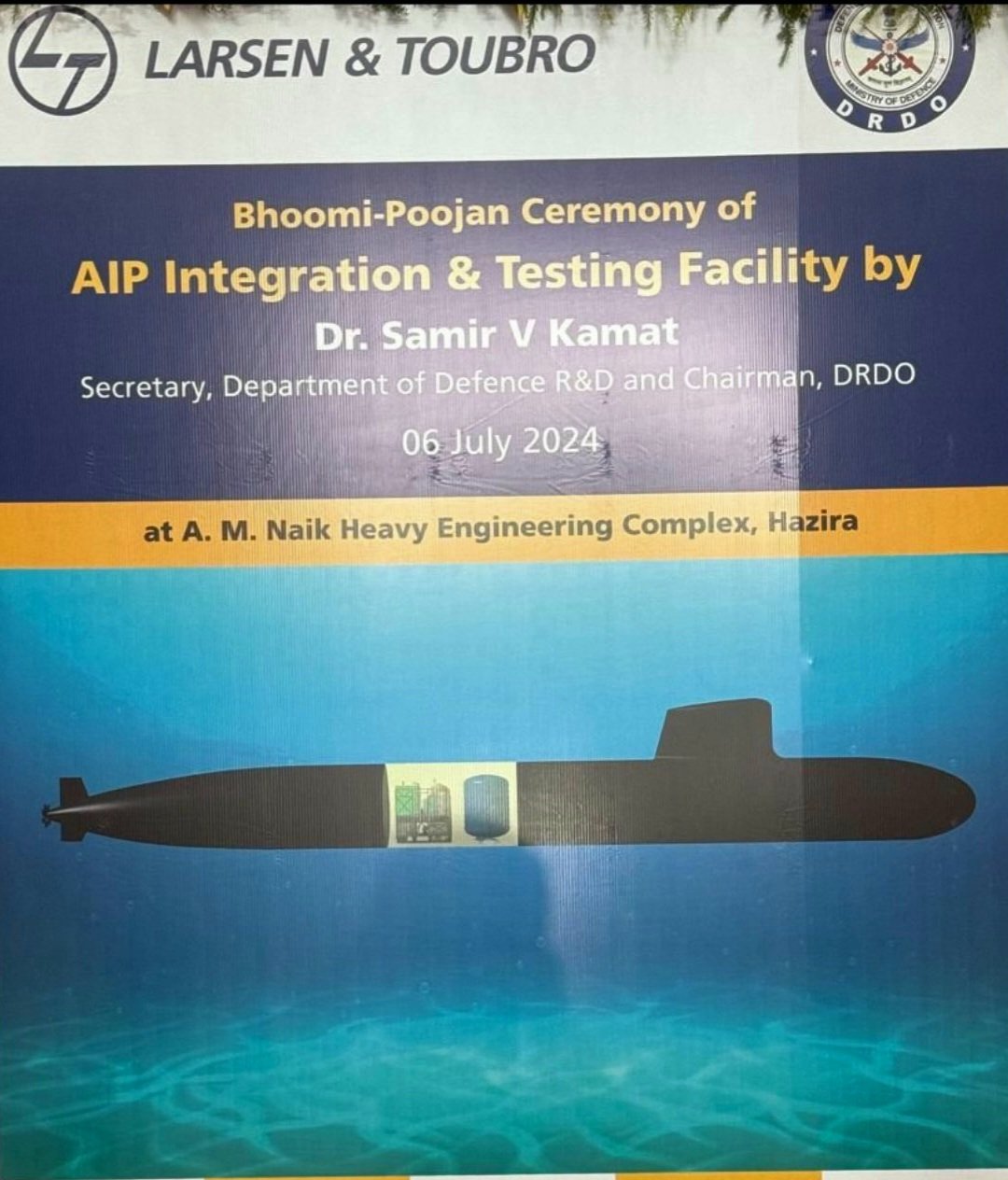SOURCE: AFI


In a significant event that underscores India’s strides in indigenous defense technology, the Bhoomi-Poojan ceremony for the Air Independent Propulsion (AIP) Integration and Testing Facility of Larsen & Toubro (L&T) was held with great enthusiasm. The ceremony was graced by the presence of distinguished dignitaries, including DRDO chief Dr. Samir V. Kamath, L&T Executive Vice President Arun Ramchandani, and other notable guests.
This facility is dedicated to the integration and testing of AIP systems indigenously developed by the Naval Materials Research Laboratory (NMRL) of DRDO, with L&T as the prime industry partner. This collaboration signifies a decade-long association between NMRL and L&T, working together to bring advanced defense technology to fruition.
In 2023, Larsen & Toubro and DRDO signed a crucial contract for the realization of two AIP System Modules for the Kalvari Class Submarines of the Indian Navy. The contract documents were exchanged between Shri Arun T. Ramchandani, Executive Vice President and Head-L&T Defence, and Shri P.T. Rojatkar, Director – Naval Materials Research Laboratory (NMRL), in the presence of Shri J.D. Patil, Member of Executive Committee of Management and Advisor (Defence & Smart Technologies) to CEO & MD of Larsen & Toubro Limited, along with senior officials from NMRL and L&T.
The AIP System Modules, forming the core of the fuel cell-based AIP system, are a testament to India’s advancing technological capabilities. These Energy Modules (EMs), which include Fuel Cells, are designed to produce the required power while generating hydrogen on board. This innovative technology addresses a major safety concern by eliminating the need to carry hydrogen on submarines, thereby enhancing operational safety.
The indigenous AIP technology developed by NMRL is notable for its unique approach to hydrogen generation on demand. This feature places India in an elite group of nations with the capability to develop and implement fuel cell-based submarine AIP technology. Such technology is crucial for enhancing the endurance and operational efficiency of conventional submarines, thereby significantly boosting the strategic capabilities of the Indian Navy.
Beyond its operational advantages, the AIP system technology is also environmentally friendly. The by-product of the hydrogen generation process is clean water, which can be safely released into the ocean. This green technology underscores India’s commitment to sustainable and environmentally responsible defense solutions.